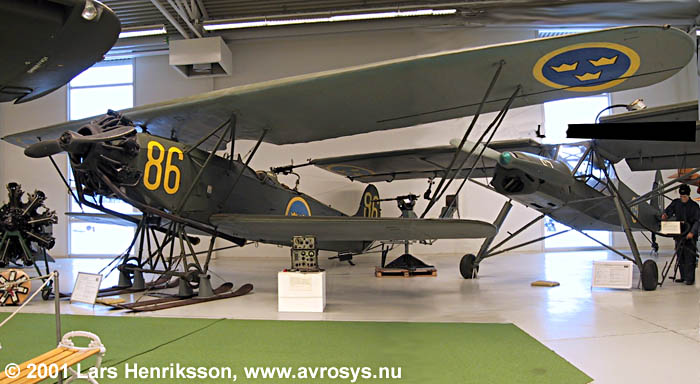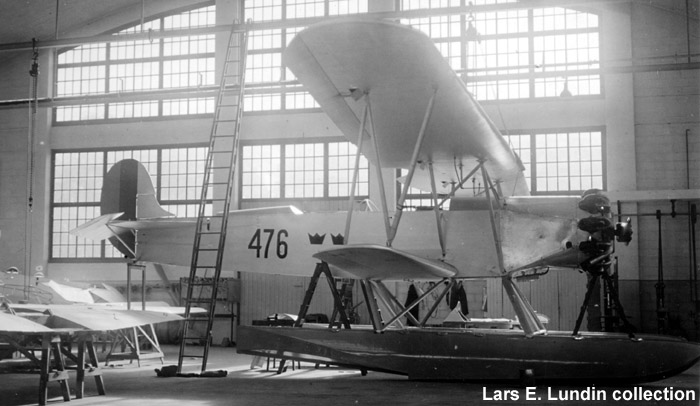|
|
||
|
S
6 - Fokker C.V (1927-1946) |
||
|
|
Page 1 (3) |
|
|
|
||
 |
||
|
The Fokker C.V design was an early multipurpose
aircraft. It could be fitted with different wings and different engines.
The D and E versions were the most successful and were sold to a number
of countries. C.V-D had a span of 12,5 m and the C.V-E a bit larger
span, 15,3 m.
The Swedish Air Force decided in 1927 to purchase
the Fokker C.V-D as a fighter aircraft (designation J
3) and Fokker C.V-E as reconnaissance aircraft (S 6). The two types were chosen because they seemed suitable to be
manufactured under licence in Sweden.
Two aircraft of each kind were bought from the
Netherlands. In the beginning of 1928, an agreement of licence
production of both variants was signed. The aircraft were to be
manufactured at the Air Force’s workshops at Malmen (CFM, later CVM).
At the same time, six more C.V-D’s and four
C.V-E’s were purchased from Fokker. CFM built 35 Fokkers in
1929-1935.
However, the two-seat Fokkers proved themselves not
suitable as fighter aircraft. From 1931, all of the fighters were
re-designated as reconnaissance aircraft. The J
in the designation was changed to an S.
The S 6 were provided the Air Force in three
different versions:
S 6 - (Fokker C.V-E). 6 aircraft
imported from Fokker in the Netherlands and 24 aircraft manufactured in
Sweden. They were powered with Bristol Jupiter VI engines of 450 hp.
S 6A - (Fokker C.V-D). Eight
aircraft imported from Fokker in the Netherlands and one manufactured in
Sweden. They were also powered with the Bristol Jupiter VI engine.
S 6B - (Fokker C.V-E). Ten
aircraft manufactured in Sweden. They had the stronger Nohab/Mercury My
VI engine of 600 hp.
The S 6s could be fitted with both wheel or ski
landing gear and also with floats.
All S 6s were armed with one 7,9 mm operated by the observer.
Some S 6s had also two fixed machine-guns in the wings. Six 12 kg or two
50 kg bombs could be carried.
One S 6B were used in 1928 when Lieutenant Einar
Lundborg saved the Italian General Umberto Nobile after the disaster
with his air ship ”Italia” after its flight over the North Pole.
Length: 9,5 m. Span: 15,3/12,5 m. MTOW 2,270
(C.V-E). Max. speed 230 km/h (S 6B). One S 6A (photo above) is displayed at Flygvapenmuseum at Malmen near Linköping. This airframe was built at CVM at Malmen in 1934. It was written off in 1945 after 1.689 hours in the air. C/n 207. Sw AF/n 3386.
Photo
below: S 6 # 476 (c/n 173) of Wing F4 at Frösön/Östersund. |
|
|
|
For the Model Builder |
|
|
 |
||
|
|
||
|
|
|
|
|
||
| Updated 2010-07-17 | ||
|
|
||
